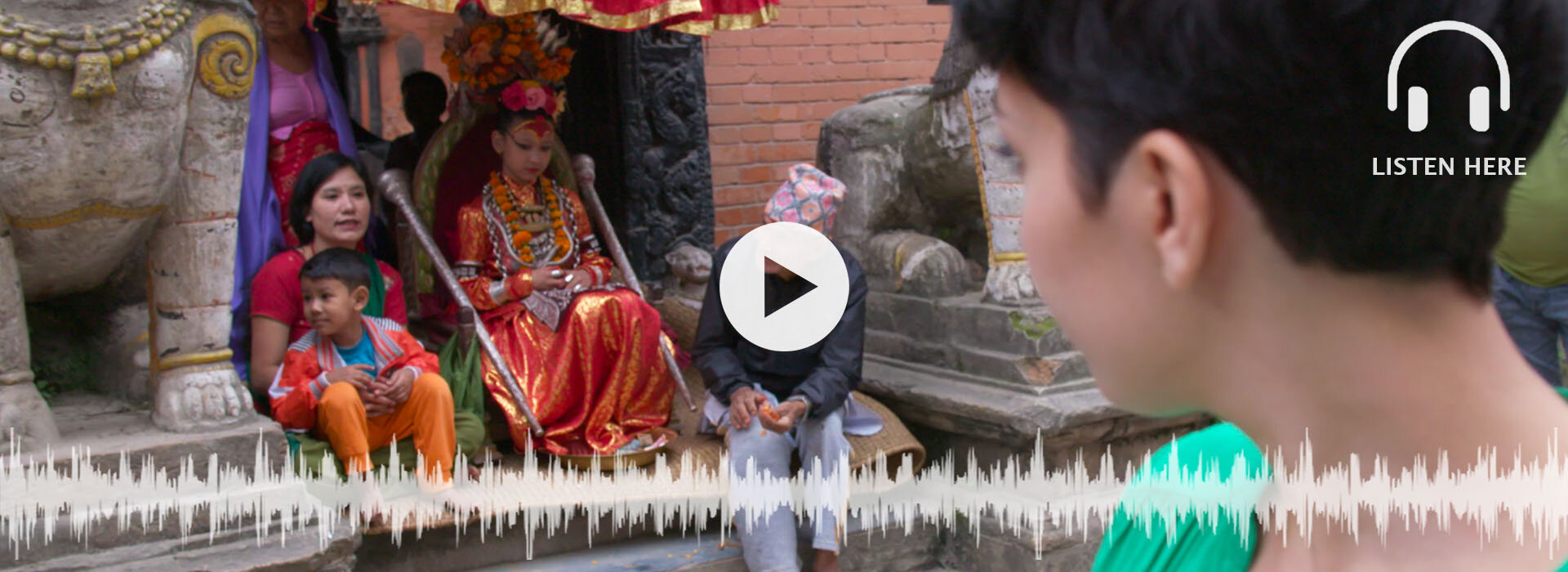Nepal’s Living Goddess
BBC | World Service & Newshour
NEPAL | Nepal’s Living Goddess
In the centre of Patan City in Nepal resides a living goddess, a child as young as four, chosen to host a deity of invincible feminine power. On her young shoulders rests the fate of the nation.
Goddesses in many religious traditions around the world exist only in the spiritual realm, symbolised by statues and icons. But in Nepal they live and breathe and take the form of young girls – the kumari. For centuries Hindus and Buddhists across the Kathmandu Valley have worshiped these young Buddhist girls believed to be possessed by the Hindu goddess Taleju. Selected so young, it is no easy task being a kumari – for reasons of purity they are taken out of school, only allowed to communicate with a select few, and are not allowed to walk on the ground outside of their homes. They are expected to sit still for long hours whilst giving blessings to thousands of visitors. But the kumari’s reign as a living deity is short. Upon her first period she is retired and replaced. Her powers are believed instantly lost and she must then negotiate how to become a normal teenager.
As part of the 100 Women Season, Sahar Zand joins the thousands of Nepalese Hindus and Buddhists on leave from work and school as they celebrate the national festival of Dashain. Sahar explores the symbolic status of blood, the importance of sacrificing animals during Dashain festival, and why, when a kumari first menstruates, the goddess is believed to vacate her body. Sahar meets solicitor Subin Mulmi who argues the strict rules of purity and segregation surrounding the kumari are detrimental to the child’s freedom and education. However, a former kumari, Chanira Bajracharya, despite describing the trauma of her first day transitioning from goddess to mortal, advocates this ancient tradition must be continued for the spiritual and cultural identity of Nepal.

